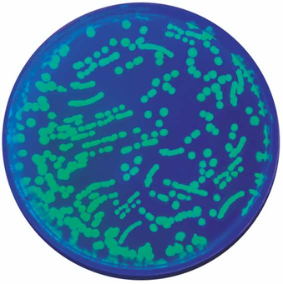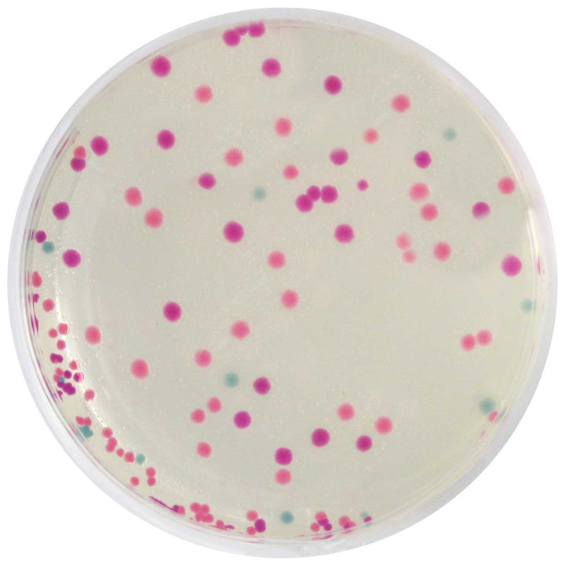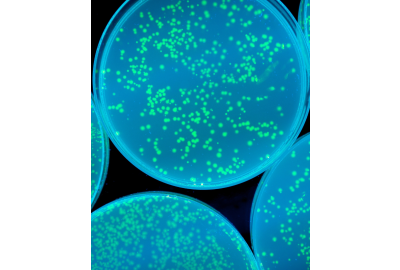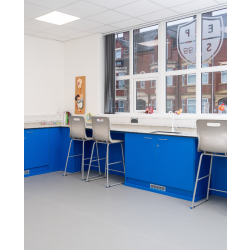

In 1928 scientist Frederick Griffith discovered transformation: the result of mixing non-pathogenic bacteria with a heat-treated pathogenic strain produced bacteria that were able to kill mice (the non-pathogenic bacteria had been transformed into pathogenic bacteria).
This ability of bacteria to take on ‘foreign’ DNA and exhibit the genes of that DNA is now used extensively in genetic research laboratories, and in the field of genetic engineering.
Using bacterial transformation scientists can produce antibiotic resistant bacteria as well as other things like producing insulin or allowing plants to become disease resistant.
Transforming Bacteria: How Does it Work?
The reason bacteria are such a good model for transformation comes from the way the bacterial cell is designed:
The chromosomal (nucleoid) DNA is not bound within a membrane as it is in eukaryotic cells, and bacterial cells also contain plasmids, circular pieces of double stranded DNA containing extra (non-essential) genes. It’s these plasmids that are the key to transformation.


For example:
- The antibiotic ampicillin works to prevent bacteria from growing by interfering with cell wall synthesis.
- A gene for ampicillin resistance (β-lactamase) is carried on a plasmid.
- If this gene (or the plasmid) is added to a second bacteria, it will start to secrete β-lactamase, and will become resistant to ampicillin, meaning that it will continue to grow in the presence of this antibiotic.
- Furthermore, it will continue to reproduce, exhibiting this gene.
- Bacteria have the ability to do this naturally, but we can also do this in the laboratory (under specific conditions). This means that scientists have been able to make bacteria producing insulin, and disease resistance in some plant varieties. This is a method of genetic engineering.
In addition, scientists have been able to study gene expression using these systems, by adding a chemical that can stop the inhibition of gene transcription in the system. In normal circumstances gene transcription is inhibited (so that the cell doesn’t waste valuable energy at times when it is not necessary) by the action of a lac repressor protein which binds to the genetic promotor and prevents transcription. Certain small molecules can be added to the system (e.g., arabinose, IPTG) which will prevent the lac repressor binding to the promoter, and so the genes can be transcribed, and the proteins made. This is known as a genetic switch.
This happens naturally (e.g., in the diagram below, for fermenting bacteria like E. coli: In times when lactose is present, allolactose will prevent the lac repressor binding, when lactose is absent lac repressor binds to the promotor and lactose degrading proteins are not made) but can also be artificially controlled. In the kits shown below IPTG is used to control gene expression.


The A Level Curriculum
All the A level curricula study gene technology.
- OCR A: Manipulating genomes
- AQA Gene technologies
- Edexcel A: Gene technology
- Edexcel B: Microbiology and pathogens
- WJEC: Variation/ inheritance
Edvotek® Kits
In order to support the students learning of this important topic, we supply 3 bacterial transformation kits from Edvotek ®:


BI130985 - Transformation of E. coli with Green Fluorescent Protein (GFP) Kit (Set Up - 50 minutes / Incubation - overnight / Transformation - 15 minutes)
In this kit the students will transform bacteria with a plasmid - pFluoroGreen™ (pFG) containing the green fluorescent protein, GFP (which makes the E. coli glow by absorbing blue light and emitting green), and ampicillin resistance. Students will add the plasmid DNA to pre prepared source cells and plate them on selective media, comparing the transformed cells to those on control plates, visualising the GFP with a UV lamp.


BT97940 - Transformation of E. Coli with Blue & Green Fluorescent Proteins Kit (Complete in 50 minutes and grow overnight.)
The same as the above, with the addition of the option to also transform with a second plasmid, containing BFP (blue fluorescent protein).


BT150274 - Rainbow Transformation Kit (Set up and plating - 50 minutes / Incubation - overnight / Transformation efficiency - 15 minutes.)
Here competent E coli cells will be transformed with plasmids containing genes for Ampicillin resistance (β-lactamase) and chromogenic proteins, which are either pink-purple or blue. Those that take up the plasmids will be selected from a growth plate and the transformation efficiency can be calculated.
The addition of the different plasmids in this kit will aid understanding of the process: DNA -> RNA -> Protein -> trait (ampicillin resistance and pigmentation).






